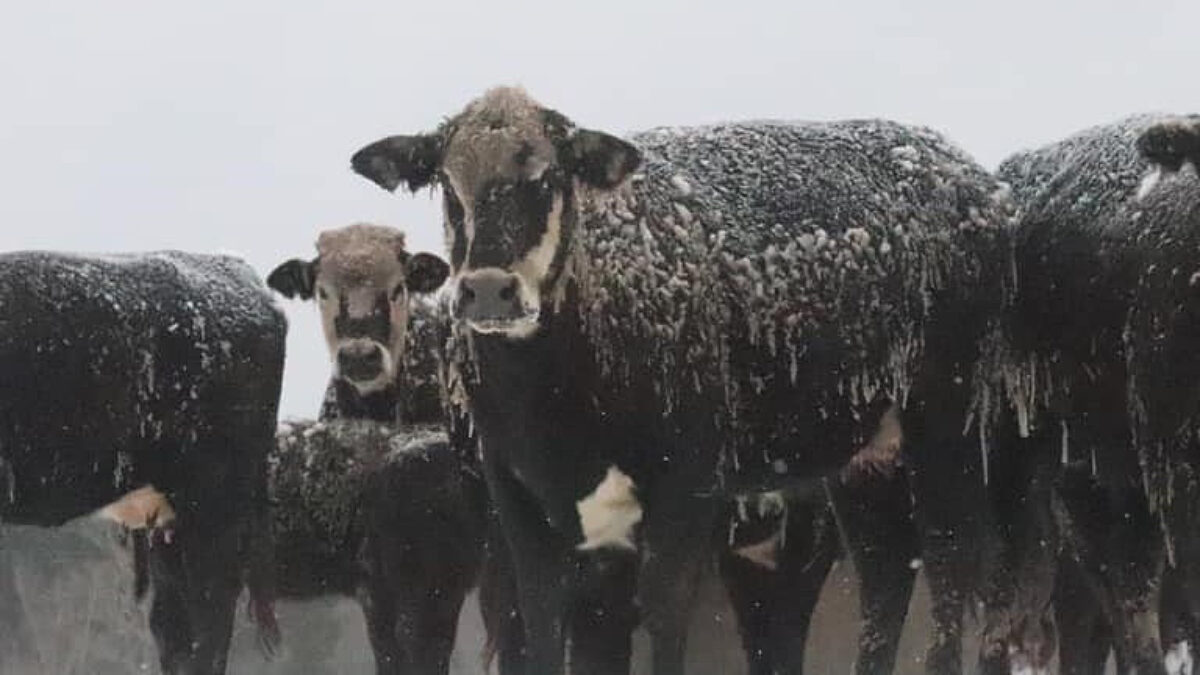Through Ice, Snow, Wind and Record-Low Temps, Farmers and Ranchers are #StillFarming
TOPICS
WeatherErin Anthony
Director, Communications

photo credit: Louisiana Farm Bureau, Used with Permission
Erin Anthony
Director, Communications
Farmers and ranchers across a large swath of the country are anxiously awaiting a warm-up after temperatures plummeted to record lows and whole states – many much more accustomed to moderate winter weather at worst – were covered in ice and snow.
Louisiana
Back-to-back winter storms brought unheard-of amounts of snow, sleet, freezing rain and record-low temperatures to parts of Louisiana this week. Particularly hard hit were cattle ranchers, many in the middle of calving season.
In the northeastern part of the state, West Carroll Parish cattleman Cullen Kovac said he’s lost more than 30 newborn calves due to the freezing temperatures since Sunday, Louisiana Farm Bureau News reported.

“Yesterday we lost 16 calves and saved one,” Kovac said. “Just a rough estimate over the past few days – we’re losing about 94% of the calves that are being born, and that’s pretty much been the case since Sunday night.”
Ranchers are working around the clock to save their herds by putting calves in pickups, barns and bathtubs full of warm water to warm the newborns and bring their body temperatures back up to normal.
The ongoing disaster is not limited to cattle. Chicken houses across Louisiana have collapsed under the weight of snow and ice, according to Jason Holmes, regional livestock specialist with the Louisiana State University AgCenter.
“Some of these newer tunnel ventilation houses are meant to move air down a house. They’re not meant for weight-bearing,” Holmes said. “So with the amount of ice and then a lot of wet snow on top of it, these houses are just crumbling.”

Texas
Farmers and ranchers across Texas were also struggling with bone-chilling winds, the stinging cold and the snow and ice. They’re facing the same challenges keeping their livestock warm, fed and watered.
Specialty crops aren’t made for this weather, either. About 35 different fruits and vegetables are grown in Rio Grande Valley, the southernmost point in Texas, according to Texas Farm Bureau. When the temperatures drop below freezing, it can be devastating to crops that aren’t supposed to be exposed to this kind of cold.
As in Louisiana, despite the overwhelming challenges, Texas farmers are #stillfarming.
“This winter storm is mentally and physically exhausting. It’s taking a toll. The exhaustion is real.
But Texas farmers and ranchers have weathered their fair share of storms. They will do so again,” Texas Farm Bureau’s Julie Tomascik wrote in a recent Texas Table Top article.
Tennessee
Similarly, the weather has been a big challenge for farmers in Middle and West Tennessee, where many have been without power for days and others without water as well. However, there’s no doubt the wellbeing of their livestock is top priority, so they are ensuring all animals are well-fed, watered and cared for, according to Tennessee Farm Bureau.
Arkansas
It’s costing poultry growers in Arkansas much more to keep their chickens warm (and alive) during this record-breaking cold snap. Kallem Hill, who farms in Perry County in the middle of the state, was one of many who experienced sub-zero temperatures last week, plus 10 inches of snow.
“In 22 years of raising birds, I’ve never seen temperatures like we’ve had over the past few days. It was -9 degrees at my house this morning,” Hill said in a Arkansas Farm Bureau video update.
In another video update (below), cattle rancher Denise Sweat said the snow some might consider picturesque poses all sorts of hazard for ranchers and their cattle.
“The mud and the mess that the snow leaves behind is just as tough on the cows as the snow is,” Sweat said, pointing out that it will be a while until the cows are comfortable again.
Sweat farms in Hempstead County, in the southwestern part of the state.
Several other Arkansas farmers have also provided video updates, which can be seen here.
Editor’s Note: There are several other states affected by this extreme winter weather snap – and many more farmers and ranchers #StillFarming through it all. This article provides only a snapshot of what producers in many states are up against.